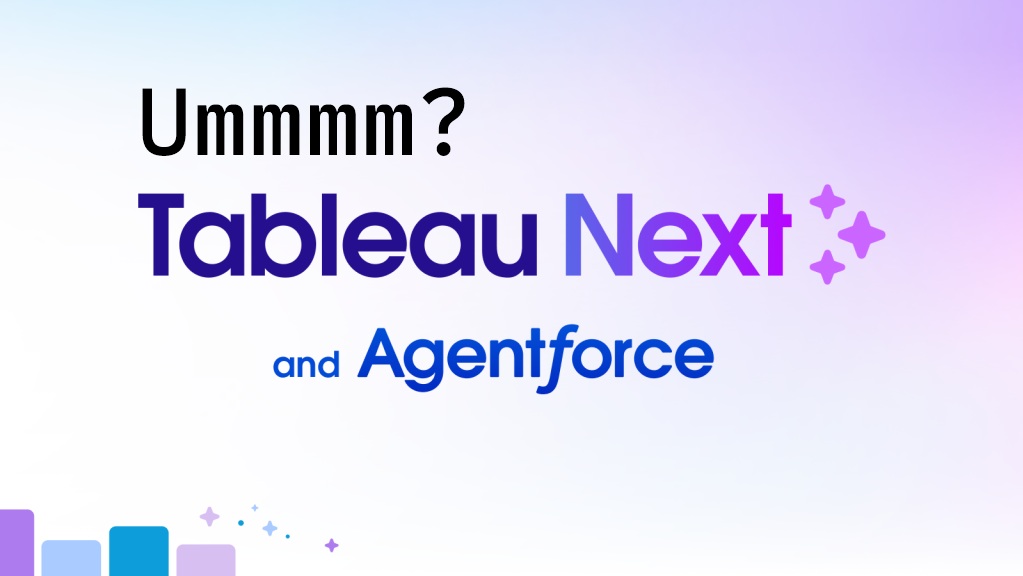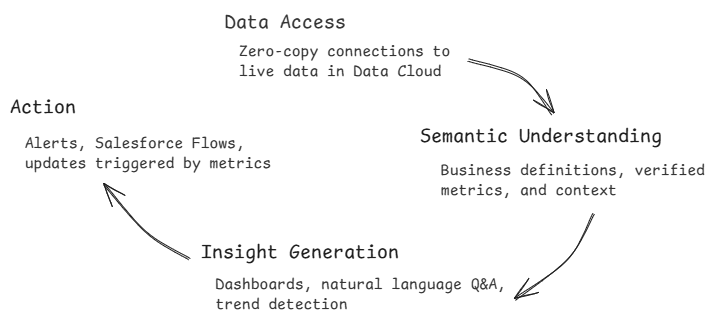Chris Vizes Data visualisation and more
What is Agentic Analytics?

What Is Agentic Analytics? And Why Tableau Next Is a Big Deal
When I first heard the term agentic analytics, I assumed it was just another bit of tech jargon. Something designed to make AI in dashboards sound more impressive than it really is. But after spending a decent amount of time using Tableau Next, it’s clear this isn’t just a layer of hype on top of the old platform. It’s something different. Not perfect, not without limitations, but worth paying attention to.
If you’ve worked in data for any length of time, the basic BI process is familiar. You pull the data, clean it, model it, build your dashboards and share them. Then you hope someone uses them to make a decision. Often they don’t, or they do, but they message you a few times first asking for help interpreting what’s going on.
Agentic analytics provides an alternative model.
From dashboards to decisions; with help from AI
Agentic analytics is about embedding AI agents into the data workflow. These agents aren’t just chatbots. They can monitor metrics, suggest actions and even trigger processes based on what they see. It’s still early days, but the idea is that AI becomes part of your team, not just a tool you check now and again.
In Tableau Next, the most visible part of this is called Concierge. You can ask it plain-language questions directly from a dashboard. “Which regions underperformed last quarter?” “Why did churn spike in June?” That kind of thing. It checks your semantic model, looks at your metrics and gives you a response. If it needs clarification, it’ll ask. If it has a suggestion, it’ll offer one. It’s not magic and it won’t always get it right, but it makes dashboards feel less static.
But that’s just one layer.
Tableau Next isn’t just about AI it’s built to work with AI
What makes Tableau Next unique is that it’s not just bolting on a chatbot to your charts. The whole platform is designed to be agent-friendly from the ground up. Everything from how data is stored, to how models are built, to how actions are triggered is built with AI in mind.
There’s a data layer (powered by Salesforce’s Data Cloud) that gives real-time access to your data across systems without having to move it around. Then a semantic layer that lets you build trusted definitions and business logic that AI agents can actually understand. On top of that, you build your visualisations and dashboards. Finally, there’s the action layer, where insights don’t just sit around—they trigger real things to happen.
This structure means that agents aren’t just passive tools. They become collaborators in your workflow. They can monitor metrics, catch issues before you do, suggest solutions, and even kick off processes in tools like Salesforce.

So what’s in it for businesses?
Let’s be honest. Most companies don’t get stuck because they can’t build dashboards. They get stuck because no one uses them. Or because the dashboards show something important but no one follows up on it.
Agentic analytics aims to close that loop. In theory, Tableau Next lets users move from insight to action without switching platforms. A sales manager spots a drop in performance and can immediately message the rep. A support lead notices a backlog and updates the customer case without leaving the dashboard.
That’s the promise. The reality depends on how well your data is structured, how much effort you put into your semantic models and whether you’ve thought about which actions are worth automating. If that groundwork isn’t in place, the AI won’t have much to go on and you’ll be left with surface-level results.
Final thoughts
This isn’t about replacing analysts or creating dashboards with no human involvement. It’s about giving people a system that’s responsive and intelligent enough to help with the bits that usually fall through the cracks.
Tableau Next won’t solve everything. Some of the functionality is still rough. Visual formatting is limited. Advanced calculations are fiddly. You’ll still need skilled people to model your data properly and verify what the AI suggests.
But the shift is worth noting. This is analytics starting to act like a two-way conversation. Not just something you look at, but something you can talk to, learn from and act through. If that idea appeals to your team, Tableau Next might be worth exploring.
Written on August 1st , 2025 by Chris Meardon